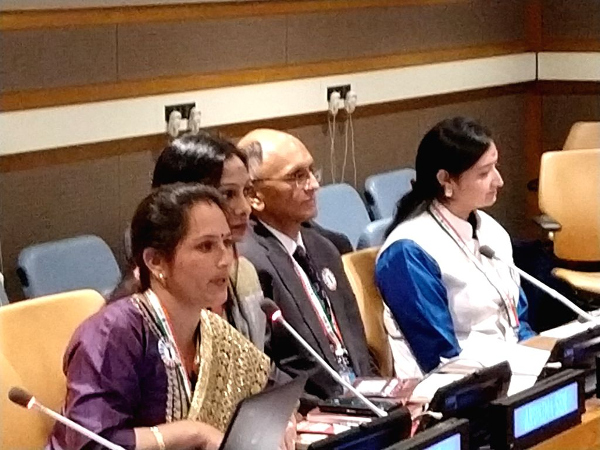UNITED NATIONS: Two women sarpanchs have brought to the UN the story of India changing the rural power structure by empowering women through a programme of gender equality that has 1.37 million of them serving as elected members of the panchayats.
At an event on women’s leadership here on Monday, sarpanch of a Himachal Pradesh panchayat, Kala Devi, spoke of how she worked to change the ingrained patriarchy in her village and removed the ban on menstruating women visiting temples, besides getting bridges and roads built.
Bhakti Sharma, who heads a Madhya Pradesh panchayat, said her role inspired women to ask for schools and roads so their daughters could also get an education and become sarpanchs like her.
The event, “Women Leaders as Changemakers: Gender Equality for Good Governance”, was organised by the Indian Ministry of Panchayati Raj and UN Women India on the sidelines of the General Assembly.
Sanjay Singh, the additional secretary in the Ministry of Panchayati Raj said that there were 253,000 village panchayts with 3 million elected members and of them 44 per cent were women.
In the early days after the quota of women’s elected membership — initially 33 per cent and later raised to 50 per cent in 20 of the 28 states — was introduced, many women were acting as proxies for their male relative.
But women began asserting themselves and since 2014 with intensive training in leadership, administration and information technology skills were fully in charge and driving the agenda.
Sharma, who is the sarpanch of Barkhedi Abdulla panchayat in Madhya Pradesh, said that she was appalled to see a woman sarpanch’s husband running the panchayat and she decided to change things and take charge.
After becoming sarpanch, she said she worked to get action on women’s priorities and needs.
To promote gender equality, she said she organised celebrations celebrations for the birth of girl children and offered to give two months of her honorarium to each of them. Over the last two years, two years the panchayat area has seen the birth of 25 girls, she said.
One of the programmes she is working on, she said, is provision of reuseable sanitary napkins.
She got 100 per cent enrollment of girls in school and extended local school availability beyond 8th standard, she said.
As sarpanch, she started a tailoring unit started in her village to provide jobs for women and got it a contract to provide uniforms for children in government schools in her block.
Other achievements she listed included, installing solar-powered street lights, starting a biogas plant using cattle manure, building roads and setting up a free clinic.
The experiences of the sarpanches evoked interest from attendees from other countries trying to empower women.
Nguyen Huong from Vietnam asked for tips on how to mobilise women to participate in such institutions.
Speaking in Hindi of her experiences, Kala Devi, the Dhar Jarol sarpanch, said that women were initially reluctant to participate in the activities of the panchayat, but she encouraged them to come together.
She said that she got women elders of the village, especially retirees from jobs, to crystalise ideas dealing with issues they faced.
Devi said that one of the difficulties she initially faced was the resistance of older people to women in leadership positions, but has been working to change the patriarchal mindset.
She said that she has been able to influence six other villages.
In her village, she said that she has had 35 concrete roads built, a bridge constructed to connect the two sides of the panchayat, and two irrigation canals built to boost vegetable production.
Sharma said that women like her and Devi were making Mahatma Gandhi’s vision of Gram Swaraj a reality.
Singh told IANS that getting women elected to panchayats and into leadership positions there creates a pipeline for them to rise to state legislatures and Parliament.
As they gain experience and prove their abilities at the gram panchayats, they will move on to the next panchayat tiers and based their on their records there rise to the higher state and central levels based on their own merit, correcting the gender imbalance.
He said that the quota system in the panchayats is only a start and is set to make a radical change in the role, participation and numbers of women in national and state politics and administration in the coming years.
Source: ET
Image Courtesy: ProKerala
You may also like
-
IAF Aircraft Set Course For Exercise Eastern Bridge VII At Oman
-
India-us Working Together In Areas Like Critical Minerals, Supply Chains And Advanced Technologies: Shri Piyush Goyal
-
Defence Secretary to co-chair 5th India-Philippines Joint Defence Cooperation Committee meeting in Manila
-
2nd India-Japan Finance Dialogue held in Tokyo on 6th September, 2024
-
Prime Minister, Shri Narendra Modi welcomes Crown Prince of Abu Dhabi
